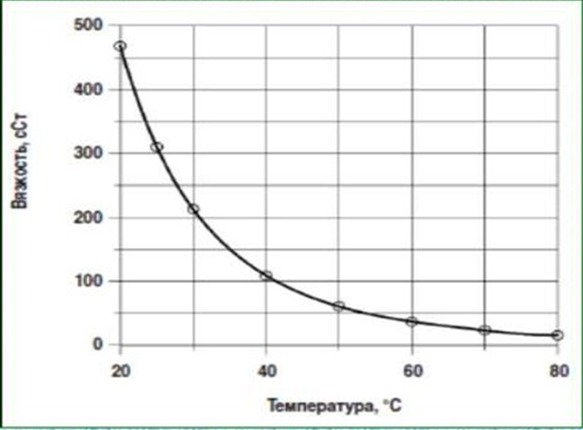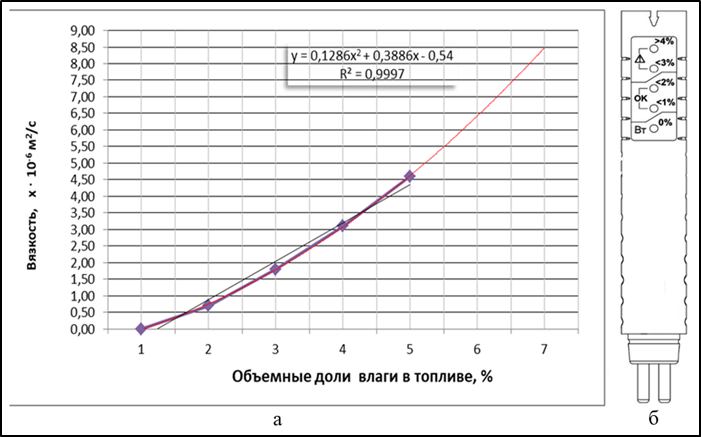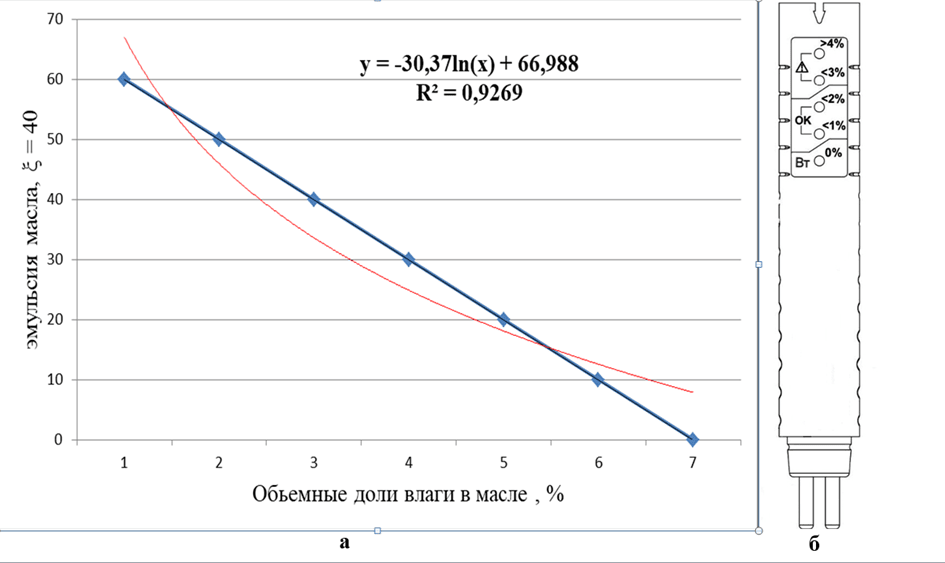When writing this essay, the master's thesis has not yet been completed. The final completion is in May 2024. The full text of the work and materials on the topic can be obtained from the author or his supervisor after the specified date.
Development of a methodology for determining viscometric parameters of liquid fuels and coking products based on a prototype measuring complex
Содержание
- Introduction
- 1. Theme urgency
- 2. Goal and tasks of the research
- 3. The effect of viscosity on fuel mixtures and organic oils
- 4. The effect of temperature on the viscosity of fuel mixtures and organic oils
- 5.Express method for determining the viscosity of fuel mixtures and organic oils
- Conclusions
- References
Introduction
The properties of fuel mixtures and organic oils that should be thought of first when considering the protection of production equipment are viscosity and water content. All this is studied by the science of rheology.
The term “rheology“ comes from the Greek words ”Rheo" (flow) and "Logos" (science) and is used to describe the flow of liquids and the deformation of solids. It is the science of the fluidity and deformation of a particular substance, which describes the relationship between force, deformation and time. It is the study of how materials react to applied stress or deformation.
When measuring rheological properties, it is extremely important to take into account 3 factors that most significantly affect fluidity: internal structure, external forces and environmental conditions (for example, temperature). The measurement of rheological properties is crucial in the production of industrial substances.
Rheology plays a vital role in the development of everything from cosmetics to food, paints and coatings. Rheological properties affect all stages of material use, including pumping, storage, production, stability, transportation, spreading, and even product performance [1].
Viscosity is an expression of the resistance of a liquid to flow: the higher the viscosity, the greater the resistance. It determines the rate at which fuel mixtures and organic oils flow. This indicates how liquid or thick they are, which affects the heat resistance. High viscosity requires more energy to flow, so it is less efficient and economical.
The viscosity of crude oil affects the ability to pump it out of the ground. The viscosity and volatility of the fuel affect how easy it is to spray in the fuel nozzle. The viscosity of the lubricant affects its ability to protect the engine [2].
Small changes in viscosity can have a significant impact on the properties of petroleum liquids, fuel mixtures and organic oils.
1. Theme urgency
The relevance of the topic is due to the fact that using a prototype measuring complex, it is possible to reduce the operating costs of an enterprise, minimize mechanical wear of equipment, reduce harmful emissions into the atmosphere, obtain useful information about product behavior and forecasting, as well as knowledge about the impact of processes, formulas, changes, aging phenomena and many other useful information about the product.
2. Goal and tasks of the research
The aim of the study is to reduce harmful emissions into the atmosphere, as well as operating costs and mechanical wear of production equipment.
The object of the study is fuel mixtures and organic oils of coke chemical enterprises.
Main tasks of the research:
- To study various indicators of fuel mixtures and organic oils with a viscosity index.
- To establish the dependencies of fuel mixtures and organic oils.
- Development of a model for measuring various parameters of fuel mixtures and organic oils.
The subject of the study is a prototype of a measuring complex of viscometric indicators and a portable indicator of the moisture content in fuel mixtures and organic oils.
The science of rheology has been studied. The physicochemical properties of liquid fuels are considered. The viscosity characteristic has been studied. The viscosity of gases and liquids is described. Methods for measuring viscosity are given. The viscosity of solutions of synthetic polymers is considered.
3.The effect of viscosity on fuel mixtures and organic oils
Kinematic viscosity is an important property of the fuel, which directly affects the quality of fuel spraying and the size of the fuel droplet in the sprayer.
Low viscosity fuels can lead to leaks in the fuel system, and high viscosity can affect fuel consumption during the intake stroke, which delays the mixing of air and fuel.
As the population increases, the global demand for energy conservation and emission reduction increases.
More energy-efficient fuel mixtures and organic oils are becoming increasingly important in terms of saving natural resources [3]. Reducing friction power losses by using ultra-low viscosity oil is one of the most effective and economical ways.
Measurement of rheological properties of crude fuel is of practical importance for its transport properties and the design of pipelines and pumping stations. The composition of crude fuels of various origins dictates the need to measure rheological properties and methods for their quantitative description.
The study of oils demonstrates that various rheological characteristics can be observed. Viscosity characteristics (flow curve) are the most commonly used rheological properties, since the transportation of fuel through pipelines is its main engineering problem. Crude fuel is an unstable material, and its rheological properties and transport characteristics also depend on the history of the material, which determines the state of the crystallizing components.
Mineral oils are natural materials obtained from various sources. They are a mixture of liquid hydrocarbons and other chemical compounds. These are waxes, paraffins, sulfur derivatives, organic aromatic compounds, and solid components.
Consequently, the rheological properties of fuel mixtures and organic oils vary from viscous liquids to viscoplastic materials with a yield strength. The rheological properties of many oils depend on temperature, since the temperature of processing and transportation intersects with the crystallization temperature of some components, mainly waxes and paraffins.

Figure 1 – Viscosity simulation
4.The effect of temperature on the viscosity of fuel mixtures and organic oils
Viscosity is temperature sensitive and varies at different temperatures.
The effect of temperature on viscosity has been the subject of research by universities and manufacturers of lubricating oils for many years and has led to the development of additives and materials that can regulate oil viscosity at various temperatures [4].
In this study, we will consider the effect of low temperature on the viscosity of organic oils and fuel mixtures, namely heating.
The chemical structure of fuel mixtures and organic oils affects the viscosity. They have large molecules, which gives them a thicker and heavier consistency than other liquids such as water.
Viscosity affects heat, and heat affects viscosity. As the temperature of the fuel or oil increases, their viscosity decreases (the opposite is true for low temperatures). This facilitates the supply of oil and fuel. This also explains why the oil flows much more freely in the summer months, when the temperature exceeds 25 or 30 degrees [5].
Temperature control is one of the most important parameters for obtaining an accurate measurement of kinematic viscosity. This is especially true for coking chemicals and petroleum products, since their viscosity-to-temperature ratio is significantly higher than that of other products.
Slight temperature fluctuations can have a big impact on the viscosity of the liquid. The bath temperature for the most common measurements of 40°C and 100°C must be adjusted within +/- 0.02°C. This is an extremely narrow window, and great care must be taken to achieve such control. Figure 2.1 shows the dependence of viscosity on temperature.
There are a number of factors that affect the temperature of fuel mixtures and organic oils:
S is a thermometer. When measuring viscosity, it is necessary to use the specified thermometer or other temperature measuring device that has the specified accuracy and meets the requirements of the test method.
Accurate reading of the thermometer with an accuracy of 0.01 °C can be difficult, so it is recommended to use a magnifying lens. The thermometer should be immersed in the bath to the desired depth. It must be calibrated at least once a year to +/- 0.02°C. In addition, the freezing point on the thermometer should be determined every six months and a correction factor should be applied.
The procedure for calibrating thermometers is quite complicated. Since temperature control is such an important parameter, it is recommended to use two thermometers per bath.
Other important parameters are the uniformity and stability of the bath temperature. The appropriate temperature must be maintained along the entire length of the viscometer. The type of circulator used, the age of the bath liquid and the viscosity of the bath liquid affect the uniformity of temperature.
The circulation pump and the viscosity of the bath liquid must be balanced to ensure a uniform temperature throughout the bath. The bath liquid must be replaced long before it begins to discolor, as a change in color usually indicates oxidation of the liquid and, probably, an increase in its viscosity [3].

Рисунок 2 – The dependence of viscosity on temperature.
These temperature requirements should not be taken lightly, since minor temperature fluctuations can lead to abrupt changes in the viscosity of some types of coke and petroleum products.
5. Express method for determining the viscosity of fuel mixtures and organic oils
At enterprises, contamination of fuel mixtures and organic oils during operation is probably one of the most destructive forms of corrosion of equipment, the service life of technological devices and energy consumption of the enterprise. The direct effects of water are changes in pH and viscosity. Moisture in organic oils and fuel mixtures can emulsify. Changes in the viscosity and quality of production products have an impact on the operation of equipment, as well as reduces emissions into the environment. The quality of fuel mixtures is determined by a number of technical characteristics. One of the main characteristics is viscosity, which is also affected by moisture content. Technological installations where fuel mixture flows with inappropriate viscosity face problems such as reduced reliability, operating costs and mechanical wear of equipment. There are many products at the coke plant for which the viscosity index and the moisture content in the stream are important.
In previous studies, it was proved that if 17% of water is added to the fuel, the release of carbon monoxide decreases by 50%, the amount of nitrogen oxide by 20%, and fuel efficiency increases by 5% [3].
To date, many tests have been conducted showing that when water is added to the fuel, the emission of incomplete combustion products decreases and the combustion process itself is intensified.
The study suggests using an industrially produced portable moisture content indicator in organic mixtures at coke chemical enterprises of the Donetsk People's Republic, shown in Figures 3.1 and 3.2. Thus, we will be able to quickly determine the amount of water in the fuel even before laboratory testing. This method will help us to find out in advance with the help of improvised means whether the viscosity index of fuel mixtures corresponds to the technical characteristics, depending on the moisture content.
The water in liquid indicator is a device with a battery and two electrodes. A voltage is applied to one electrode. When these electrodes are immersed in fuel, an electric current is generated, which varies depending on the distance between the electrodes and their resistance. The built-in program in the device allows you to calculate the electrical resistance of the liquid. If the fuel or oil is without excess moisture, then the resistance is high enough. When the moisture concentration increases, the electrical resistance begins to decrease, which leads to changes in the LED indicator [6].
In order to reduce the risks of errors in the readings of the device, the electrodes are always located at the same distance from each other. The software of the device displays the percentage of moisture content through the indicator.
After the inspection, the readings should be evaluated. If the indicator was within the green color, then all indicators are normal, and if in the red zone, then the process parameters should be monitored.
In Figures 3 and 4, we can consider the dependence of the viscosity of the emulsion of fuel mixtures and organic oils on the moisture content and the portable indicator of the moisture content in fuel mixtures.

Рисунок 3 – a - is the dependence of the viscosity of the emulsion of fuel mixtures on the moisture content, b - is a portable indicator of the moisture content in fuel mixtures.

Рисунок 4 – a - is the dependence of the viscosity of organic oils on the moisture content, b - is a portable indicator of the moisture content in fuel mixtures.
During the study, a regression relationship was determined between the indicators of the proportion of viscosity and moisture in the fuel, which is a log of the second degree (R2= 0.9997) and moisture in the oil (R2= 0.9269).
At the next stage, the fuel mixture is sent to the TSL to determine the viscosity index on a previously developed measuring complex for determining the viscosity of biodiesel and liquid mixed fuels [7].
In the preliminary studies, the dependence of the viscosity of fuel mixtures on the moisture content was obtained, and the regression dependence was determined. A method of using a portable indicator of the moisture content in fuel mixtures for rapid assessment of the viscosity of fuel mixtures is proposed. The proposed method will avoid mechanical wear of equipment, reduce energy consumption, improve fuel quality and significantly reduce harmful emissions into the atmosphere.
Conclusions
During the execution of the master's thesis, the following issues were considered and studied:
- The effects of viscosity on organic mixtures and fuel oils.
- The effect of temperature on the viscosity of organic oils and fuel mixtures.
An express method for determining the viscosity of fuel mixtures and organic oils was also proposed.
References
- Rheology – The Science Behind Material Flow [ Электронный ресурс ]: интернет ресурс /статья написана Рией Велури, членом редакционной группы журнала "Промышленные смазочные материалы", 3 марта 2022 г.-Режим доступа: https://www.tribonet.org...
- Viscosity Measurement: So Easy, Yet So Difficult [ Электронный ресурс]: интернет ресурс /статья написана Джанет Л. Лейн, ExxonMobil; Кеннет О. Хендерсон, компания Cannon Instrument Company в ноябре 2004 г. - Режим доступа: https://www.machinerylubrication.com...
- The Effect of Viscosity and Friction Modifier on Fuel Economy and the Relationship Between Fuel Economy and Friction [ Электронный ресурс ]: интернет ресурс /статья написана Сейк Парк, Йенгун Чо, Квунсуп Сон и Намгью Хан / Международный журнал SAE по топливам и смазочным материалам / Том 2, № 2 (2010), стр. 72-80 (9 страниц) / Опубликовано: SAE International.- Режим доступа:https://www.jstor.org...
- Effects of temperature on viscosity of oil [ Электронный ресурс ]: интернет ресурс / данные об авторе отсутствуют.- Режим доступа:https://www.scienceprojects.org...
- The effect of heat on oil viscosity in industrial sectors oil [ Электронный ресурс ]: интернет ресурс / данные об авторе отсутствуют. - Режим доступа: https://www.wattco.com...
- Как работает тестер тормозной жидкости? [Электронный ресурс]: интернет ресурс / данные об авторе отсутствуют. - Режим доступа: https://avtograf70.ru...
- Измерительный комплекс для определения вязкости биодизеля и жидких смесевых топлив. [Электронный ресурс]: Авторы: Савченко Н.Э., студент гр. ХТзм-17, Ошовский В.В., доцент, к.х.н.// «Инновационные перспективы Донбасса». Международный научный форум ДНР. / ДОННТУ.- Донецк: ГОУ ВПО «ДОННТУ»/ Каталог экспонатов выставки 2022 год. - Режим доступа: https://docviewer.yandex.ru...
